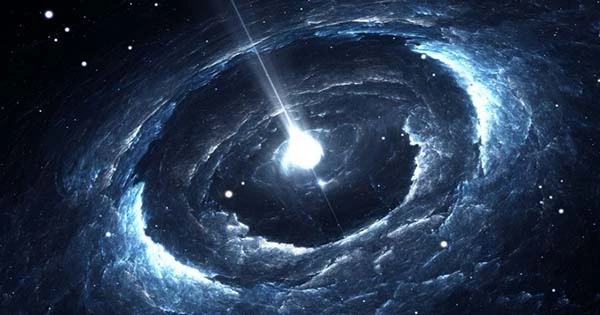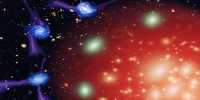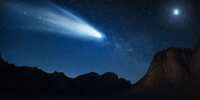Astronomers were already perplexed by Fast Radio Bursts (FRBs) when they came upon the even stranger phenomena of a repeated FRB. Things have now grown even more perplexing thanks to the discovery of a second recurring FRB, which its discoverers characterize as “younger and stranger” than the first. As strange as the new discovery is, it may hold the key to understanding at least one type of FRB. FRB 190520B is a new repeating object found on the fringes of a dwarf galaxy around 3 billion light-years distant. The greatest electron density of any FRB host galaxy identified so far is shown by dispersion of the radio signal (where low-frequency waves are slowed by passing through free electrons compared to high-frequency counterparts).
The journal Nature reported the identification of 87 follow-up bursts using the Very Large Array after they were first observed using the Five-hundred-meter Aperture Spherical radio Telescope (FAST). It’s difficult to estimate how frequently the bursts happen; five were detected at a frequency of 3 GHz in a 16-hour observation period, but fewer at other radio frequencies. FRBs, as the name implies, include very intense radio wave emissions lasting only a few milliseconds, during which time as much energy as the Sun releases in days can be emitted. Only 5% have been discovered to repeat – but it’s possible that others do as well, either on timeframes so lengthy that we can’t detect them or simply when we aren’t looking.
There’s suspicion that all FRBs repeat, but we’re still a long way from knowing for sure. One thing that makes it difficult for us to figure out what generates FRBs is that while we can typically discover the host galaxy, we can’t always pinpoint the source. Objects are rarely observable at any frequency that the FRB may be tied to. The bursts connected with FRB 190520B have been proven to be related with a persistent radio source (PRS). This is just the second time it’s happened; the first was with FRB 121102A, the first repeating FRB discovered.
Astronomers may be able to determine the nature of the PRS source, and hence the FRB, in theory. We’re not quite there yet, but the scientists believe FRB 190520B’s severe electron dispersion indicates the FRB is in a complicated plasma environment that mimics a superluminous supernova at least in part. This might indicate that the FRB has recently “turned on” or begun broadcasting. More than merely being the only two FRBs known to be related with a PRS, FRB 190520B, and FRB 121102A have a lot in common. Both are extremely active, even among recurring FRBs, and both come from electron-rich environments — in the case of 190520B, 10 times more than typical.
FRB 190520B, on the other hand, is more severe on all counts, which explains why the authors think it’s the oddest of the siblings. In a statement, co-author Dr. Casey Law of Caltech remarked, “Now we have two like this, and it raises some serious considerations.” “Is there a difference between those who repeat and those who don’t? Is there a regular occurrence of persistent radio emission? “Kshitij Aggarwal, a PhD student at West Virginia University, contributed his two cents.
FRBs are thought to emanate from either recent supernova remnants or magnetars. It’s probable that FRB 190520B and FRB 121102A, as well as the vast majority of other known FRBs, belong to two distinct populations, with this pair representing newborn supernova debris and the others being magnetars. “We also believe that FRB 121102A and FRB 190520B are the first members of an emerging FRB population. In a few years, a cohesive picture of the genesis and evolution of FRBs is anticipated to emerge “In a separate statement, Dr. Li Di of the Chinese Academy of Sciences University stated. The FRB-like signals, which turned out to be from anxious astronomers opening the microwave oven in the tea room before it was ready, made everything so much simpler.














